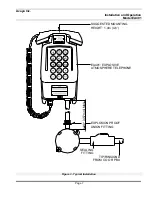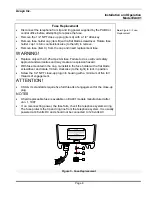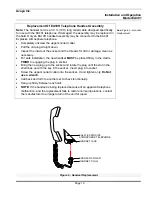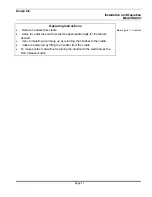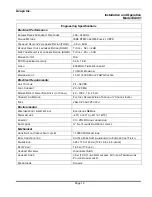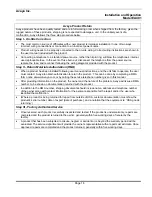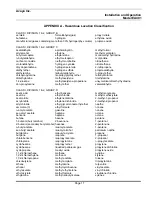
Avaya Inc.
Installation and Operation
Model EA401
Page 18
APPENDIX A
(cont.)
CLASS II, DIVISION 1 & 2, GROUP E
Atmospheres containing combustible metal dusts regardless of resistivity, or other combustible dusts of
similarly hazardous characteristics having resistivity of less than 105 ohm-centimeter
CLASS II, DIVISION 1 & 2, GROUP F
Atmospheres containing carbon black, charcoal, coal or coke dusts which have more than eight percent
total volatile material (carbon black per ASTM D1620; charcoal, coal and coke dusts per ASTM D271)
or atmospheres containing these dusts sensitized by other materials so that they present an explosion
hazard, and having resistivity greater than 100 ohm-centimeter but equal to or less than 108 ohm
centimeter.
CLASS II, DIVISION 1 & 2, GROUP G
Atmospheres containing combustible dusts having resistivity of 100000 ohm-centimeter or greater.
NOTE: This appendix is a summary of information contained in the National Electrical Code. Please
refer to local applicable Electrical Codes for details and latest update.
APPENDIX B - Applications
The EA401 Explosive Atmosphere Telephone has been approved by Canadian Standards Association
(CSA) and listed by Underwriters' Laboratories (UL) for use in explosive atmospheres.
Locations that may require explosion-proof equipment include:
•
chemical
plants
•
petrochemical
plants
•
offshore drilling rigs
•
land-based
drilling
rigs
•
gas
plants
•
oil & gas metering facilities
•
refineries
•
fueling
stations
•
breweries and distilleries
•
defense
installations
•
munitions storage depots
•
missile
silos
•
liquefied natural gas terminals
•
tankers and tanker depots
•
paint and varnish manufacturing plants
•
grain processing and similar industries
•
bulk loading stations
•
fertilizer
plants
APPENDIX C - EA401 Models and Options
•
P4011 Model EA401 Standard Telephone
•
P4021 Model EA401 With Internal Ring Detect Relay
•
P1011 Model EA401 Assembly With CE20 Line-Powered, Explosion Proof Ringer




